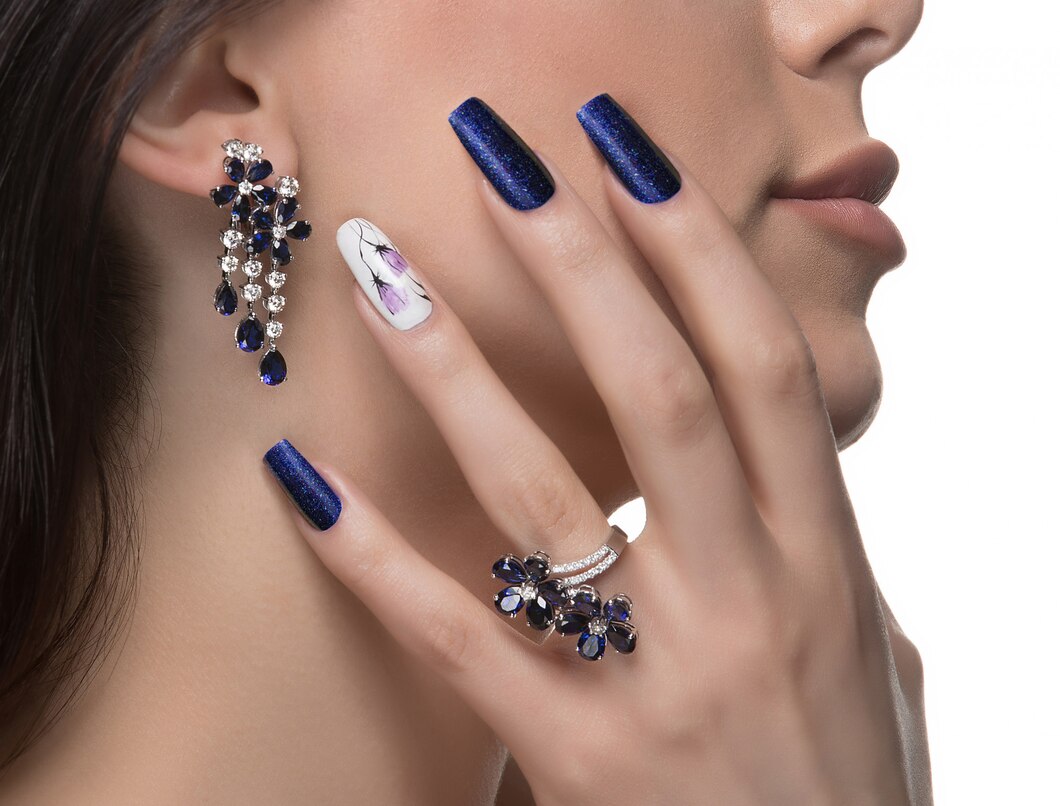Nail art has become a popular and expressive form of personal adornment, with roots that stretch back thousands of years. From ancient civilizations to today’s modern trends, the evolution of nail art reflects changes in culture, technology, and beauty standards. This article explores the journey of nail art from its early beginnings to its current status as a global fashion phenomenon.
Ancient Beginnings
The history of nail art dates back to around 3000 BC in Ancient Egypt and China. In Egypt, both men and women used henna to stain their nails, signifying their social status. The color of the henna indicated their rank; for instance, dark red was often reserved for the highest echelons of society, including the pharaohs.
In China, nail art was practiced during the Ming Dynasty (1368–1644). Chinese royals and aristocrats used a mixture of beeswax, egg whites, gelatin, and gum arabic to create intricate designs. The colors and length of the nails indicated a person’s social status and were often seen as a symbol of wealth and leisure.
The Middle Ages to the 19th Century
During the Middle Ages, nail care and decoration were less prominent, but the 19th century saw a revival. In the Victorian era, modesty and natural beauty were emphasized, and women often buffed their nails to a shine using chamois cloths and tinted powders. However, nail polish as we know it did not yet exist.
The Birth of Modern Nail Polish
The 20th century marked significant advancements in nail art, starting with the invention of modern nail polish. In the 1920s, inspired by the automotive paint used on cars, Michelle Menard developed the first nail polish using nitrocellulose. This invention revolutionized nail care, making it possible to have long-lasting and vibrant colors.
The 1930s and 1940s saw the rise of the “moon manicure,” where the half-moon at the base of the nail was left bare or painted a contrasting color. This trend was popularized by Hollywood actresses and became a staple of glamorous fashion.
Nail Art Explosion in the Late 20th Century
The late 20th century saw an explosion of creativity in nail art. The 1970s and 1980s introduced bold colors, glitter, and intricate designs. Acrylic nails became popular, allowing for longer and more durable nail extensions.
The 1990s and 2000s brought about further innovations with the advent of gel nails, nail decals, and the incorporation of 3D elements like rhinestones and charms. Nail art became a canvas for self-expression, with trends shifting from minimalist designs to elaborate and eye-catching artwork.
Modern Trends and Technology
Today, nail art is a global phenomenon, heavily influenced by social media and celebrity culture. Platforms like Instagram and Pinterest have become hubs for nail art inspiration, showcasing everything from minimalist chic to avant-garde creations.
Technological advancements have also played a crucial role in the evolution of nail art. UV-cured gel polishes offer longer-lasting manicures, while nail stamping kits and digital nail printers allow for intricate designs to be created with ease. The use of holographic, chrome, and thermal polishes adds another layer of creativity, making nail art more versatile than ever.
Cultural Impact and Future Trends
Nail art has also become a significant part of various cultural identities. In Japan, nail art is considered an essential aspect of fashion, with “nailists” creating elaborate designs that can take hours to complete. In the United States, the influence of African American culture has been pivotal, popularizing trends like nail extensions and intricate designs.
Looking to the future, the sustainability movement is making its way into the nail industry. Eco-friendly and non-toxic nail polishes are gaining popularity, along with reusable nail art tools and techniques that reduce waste.
The history of nail art is a testament to human creativity and the desire for self-expression. From ancient henna-stained nails to the cutting-edge designs of today, nail art continues to evolve, reflecting the changing tides of fashion and culture. As we move forward, it’s exciting to imagine the future innovations that will shape this ever-evolving art form.








